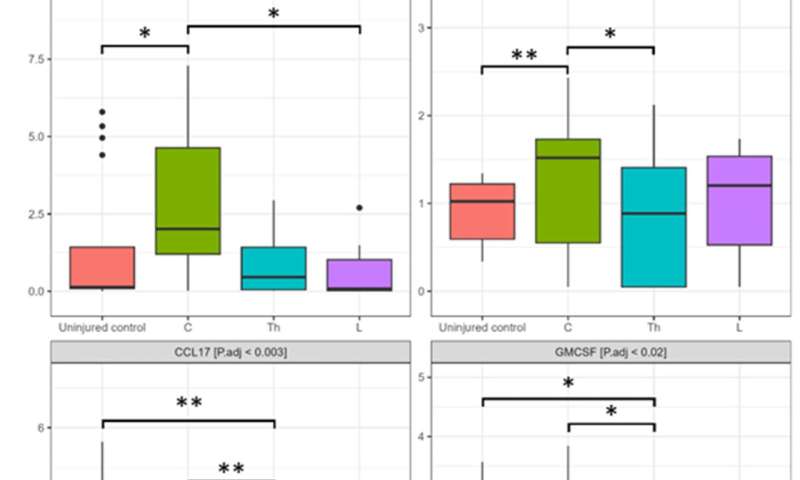Gene and Cell Technologies Lab continues research of spinal cord injury

A new paper was published in Biomedicines.
A project by KFU scientists is aimed at improving the understanding of the role of cytokines in blood serum and cerebrospinal fluid in patients with spinal cord injury (SPI) depending on the timing of the injury. It is carried out as part of the work of the scientific group 'Molecular and cellular mechanisms of neural regeneration' headed by Lead Research Associate Yana Mukhamedshina.
The interest of scientists of the Institute of Fundamental Medicine and Biology to the problems of patients with SPI is related to the relevance of the issue for the world in general and Russia in particular. SPI is a global public health problem affecting tens of thousands of people annually. Neurological disorders caused by SPI often lead to serious disability and radical changes in the quality of life of patients and their families. While SPI used to most commonly affect young people, its incidence among the elderly is now also high.
As explained by Yana Mukhamedshina, cytokines (small peptide information molecules) play an important role in the regulation of inflammatory and immune processes, including in SPI. In this injury, a complex cascade of inflammatory reactions occurs, in which various cytokines are involved.
According to co-author, Junior Research Associate Davran Sabirov, the pathogenesis of SPI involves a complex interaction of primary and secondary mechanisms. Primary injury is directly related to mechanical damage (compromises tissue integrity), while secondary events (secondary injury) such as inflammation, ischemia, and excitotoxicity, further exacerbate the damage. Secondary injury results in the release of a large number of molecules, including cytokines, involved in inflammatory processes.
If in the first cytokine study, which the scientists conducted two years ago, they compared serum values among the control group of patients with SPI on the 14th day after injury and healthy people; this time they used multiplex analysis to study cytokines in cerebrospinal fluid and serum. In addition, the control groups of patients were expanded: the parameters of patients on the 3rd, 7th and 14th day after injury were evaluated. All patients for the study were recruited in the Department of Neurosurgery of the Republican Clinical Hospital of Tatarstan after signing informed consent. KFU scientists performed multiplex analysis of 40 cytokines in cerebrospinal fluid and serum of patients with SPI at different time periods after injury (day 3, 7 and 14), comparing the data obtained with those of control subjects without injury. Both increase and decrease in the levels of various cytokines after SPI were observed.
"Cerebrospinal fluid provides accurate data on the central nervous system, but it is risky to obtain. Blood serum is less invasive but may be less specific. Both approaches together expand our understanding of SPI and may form the basis for new diagnostic and treatment methods. It also opens the way to more personalized therapeutic interventions," notes Sabirov.
According to the team, current treatments for SPI are often generalized and may not take into account the unique biochemical changes that occur in each patient. This makes it difficult to predict the outcome of treatment. This study indicates that monitoring cytokine levels may offer a more personalized approach, potentially reducing the risk of complications and improving outcomes in TCM for patients. It also sets the direction for future research on other biomarkers that may be key in the treatment of TCM.
"Measurement of cytokines at each control stage—at 3, 7, and 14 days after injury—will allow us to speak about the nature of inflammation. In the future, it will be possible to more effectively build a prognosis of recovery and better conduct therapy based on the condition of the individual patient," adds Junior Research Associate Ilyas Kabdesh.
More information:
Comparative Analysis of Cytokine Profiles in Cerebrospinal Fluid and Blood Serum in Patients with Acute and Subacute Spinal Cord Injury
www.mdpi.com/2227-9059/11/10/2641
Provided by Kazan Federal University